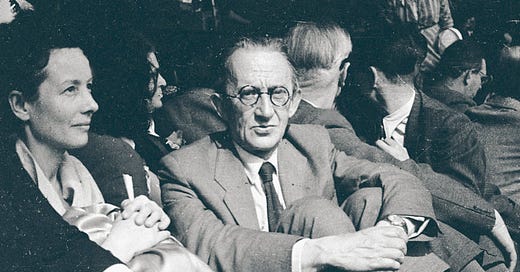Intellectual 'Sunday Circle' of artists comes to power in Hungary
After their brief reign, they generally slipped away to the West -- to the West's benefit.
This is adapted from near-the-beginning chapters of my unpublished manuscript: “The Will to Style: Utopian Radicals of the Weimar Bauhaus, 1919-1925.” These events were strong motivations for young ‘creatives’ in Budapest and Vienna, who later emigrated to Berlin and Paris and to the United States….-ts
BERLIN (27. January 2025) — Philosopher, social critic and literary historian György Lukács was the most high-profile member of the “Sunday Circle,” (Sonntagskreis) a discussion group that met during World War I in the Budapest home of film theorist and writer Bela Balázs.
Other members of the Sunday Circle included Friedrich Antal, Karl Mannheim, Arnold Hauser, Bela Fogarasi, Lajos Fülep, and Hungarian-American writer Anna Lesznai. Their meetings were largely convened by Lukács, leading conversations that danced among various subjects — folklore, painting, history, etc. — before generally coming to rest on the subject of love; or “the philosophy of love,” as one member of the circle later remembered.
Both vocally opposed to Austria-Hungary’s march to war, Lukács and Balázs launched the Sunday Circle to exchange ideas about socio-democratic alternatives to the despotic Austro-Hungarian Empire. Around 1916, these ideas were spreading among young people — a widening anti-war movement not only in Budapest and Vienna, but across Germany and Europe.
Then came November 1918 and the fall of the Austro-Hungarian Empire and Prussian/German Kaiserreich. The world watched in surprise as two German royal houses fled their respective kingdoms, suddenly liberating the people of a dozen or so “satallite nations” in Eastern Europe to develop independently on their own. Or, at least, that was the hope of millions of Europeans in 1918.
The road beyond the November Revolution wasn’t a smooth one — certainly not for the fallen Empire’s two largest states, the people of Hungary and Czechoslovakia. In early 1919, Hungary’s left-wing Social Democrats and hard-core socialists were divided — just as they were in so many other places, including Berlin. Unlike Berlin’s divide, however, Hungary’s mainstream liberals handed the reins of government to the hard-left Communists, led by Leninist rhetorician Bela Kun. Taking power that spring, Kun promptly declared a new “Soviet-” or “Councils Republic” in Hungary, saying the new state would break up large land-estates and offer free public education, endorsing people’s right to learn and speak any language of the broad kingdom that they chose.
The revolution threatened to spread to Vienna and farther. An alliance of leftists took control of Munich, declaring a Soviet Republic of Bavaria before being brutally put down by an army of right-wing soldiers, sent by the new social-democratic government in Berlin. (Spoiler: The leftist Hungarian Republic, like its weaker counterparts in Prussia and Bavarian Germany, didn’t last a single year.)
During Europe’s brief revolutionary moment, however, people from Budapest to Paris and Madrid were stirred (sometimes shaken) by bold, “practical” (sachlich) dreams of an ideal socio-economic society — ideas of social fairness and freedom that spawned upstart movements in modern architecture, theater/film, the graphic arts, and literature….





